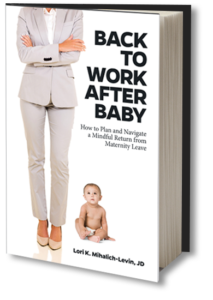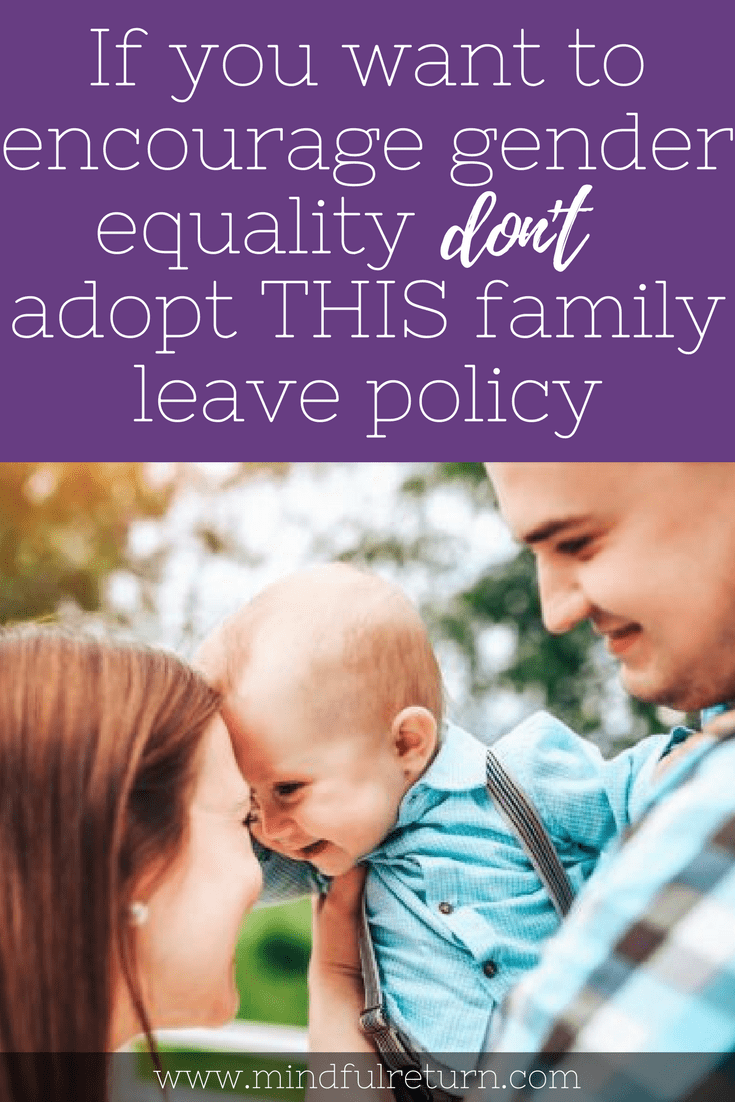 So many companies these days are making good-faith efforts to promote gender equality. From studying gender pay gaps. To supporting women’s leadership and rainmaker programs. To providing unconscious bias training. The efforts are many. We all know, by now, it makes good business sense to create diverse teams and retain top talent.
So many companies these days are making good-faith efforts to promote gender equality. From studying gender pay gaps. To supporting women’s leadership and rainmaker programs. To providing unconscious bias training. The efforts are many. We all know, by now, it makes good business sense to create diverse teams and retain top talent.
There’s one policy many well-intentioned employers still have on the books, though, that I have trouble wrapping my head around. It’s the so-called “primary caregiver” parental leave policy. Under this type of policy, a “primary caregiver” is typically offered a longer period of paid parental leave. And a “non-primary caregiver” or “secondary caregiver” is offered a shorter period of paid parental leave.
It sounds gender neutral, right? A “primary caregiver” could be a mom or a dad. Technically. It’s true, the policy doesn’t use gendered language.
BUT. Of the employees who have availed themselves of the longer leave granted to the “primary caregiver” at companies with this policy, how many have been moms? What percentage of new dads designate themselves as “primary”? In heterosexual couples, there is still a default presumption that the “primary” caregiver will be the mother. After all, she gave birth to the baby, right?
Reasons to Ditch the “Primary Caregiver” Distinction in Your Leave Policy
A few years ago, I attended my first Diversity & Flexibility Alliance Annual Conference, where I got a good education on the fact that “primary caregiver” policies are not best practices at law firms. And I’ll add, they shouldn’t be considered a best practice anywhere.
Here are just a few arguments against this type of policy:
- The world (fortunately) doesn’t work this way anymore. As I write this, I can’t seem to let myself take the quotation marks off the term “primary caregiver.” (This, despite my sinking feeling that I am now completely overusing quotation marks in this post…) In my household, and in the household of so many of my working parent friends, the concept that there IS a “primary” caregiver is completely foreign. My husband and I are both equally engaged in this parenting endeavor. And if you forced us to pick a “primary,” it would be a completely arbitrary and meaningless choice. Why does there have to be a “primary” caregiver?
- Enforcement is a joke. Presuming only one parent in a couple works for your company, what’s to stop two parents from both declaring themselves the “primary” caregiver at their respective companies? I know, I know, it’s the honor system. But why force that on a couple? And how exactly do you plan to verify the individual’s “primary” status? Counting and comparing the number of diapers changed? Bottles washed?
- “Primary” often implies the mother, and it encourages dads to think about their parental status as less important from the beginning. Don’t take it from me, though. Take it from a dad who took his company’s full leave for a bunch of reasons, which he articulates so eloquently here:
But the other reason, perhaps less obvious, that I felt it was important to take as much leave as possible, is that I genuinely think it promotes gender equity…even with good leave policies, when we put all of these stresses and anxieties on women we’re perpetuating imbalances in the workplace. For women who physically gave birth to their own child, the physical recovery necessary is immense – even putting financial and other factors aside, mothers don’t have the luxury of not taking basically as-much-leave-as-possible in the same way that fathers do.
(Check out his full post here. Scroll down to Day 8 for his full analysis.)
- Oh, and you just might get sued if you made dads “secondary” caregivers. Last year, a dad at JP Morgan Chase filed what is thought to be the first private sector case challenging a parental leave policy that distinguishes between “primary” and “secondary” caregivers. Read more about it in this Washington Post article, “Are fathers ‘secondary’ caregivers? A JPMorgan employee claims its policy is biased.”
Practicing What We Preach Here at Mindful Return
Mindful Return started out as a resource for moms. It was my lived experience. I’m passionate about helping to do something about the leaky pipeline of women leaders. There are also experiences related to working parenthood that are unique to us mamas.
AND, as Mindful Return has grown, I’ve felt it important to promote gender equality through my own work, too. I teamed up with Jeremy Smith of Paternity Leave Pioneer, and we are now proud to be able to offer our own gender-equal resources:
In January, we launched the dad version of the Mindful Return 4-week online program. Moms aren’t the only ones who could use some help navigating the transition to working parenthood, it turns out:
- More on the dad version of the Mindful Return program is here.
- More on the mom version of the program is here.
- Information for employers on offering these programs as a parental leave benefit is here.
Then, in February, we launched the dad version of our template parental leave plan that employees can use to help them plan their parental leave:
- Get the Mindful Return Paternity Leave Template here.
- Get the Mindful Return Maternity Leave Template here.
Your Action Steps
If your company is considering adopting a “primary caregiver”-based parental leave policy, take a pass on implementing that idea. And if your company has this type of policy on the books, consider working toward getting it off the books.
I’m proud of my own firm, Dentons US LLP, for eliminating the “primary caregiver” distinctions in its parental leave policies last year. Yes, there are still cultural issues to grapple with. There are, of course, stigmas around dads taking leave that need to be overcome. But the firm’s policies actually promote gender equality now.
De-gendering parental leave is just one of the many steps employers can take to help promote gender equality in our workplaces. But it’s an important one.
 If you need more help getting your head in a better place to return to work after maternity leave, join us for the next session of Mindful Return.
If you need more help getting your head in a better place to return to work after maternity leave, join us for the next session of Mindful Return.
Want more practical tips on working parenthood? Check out my book, Back to Work After Baby: How to Plan and Navigate a Mindful Return from Maternity Leave.


